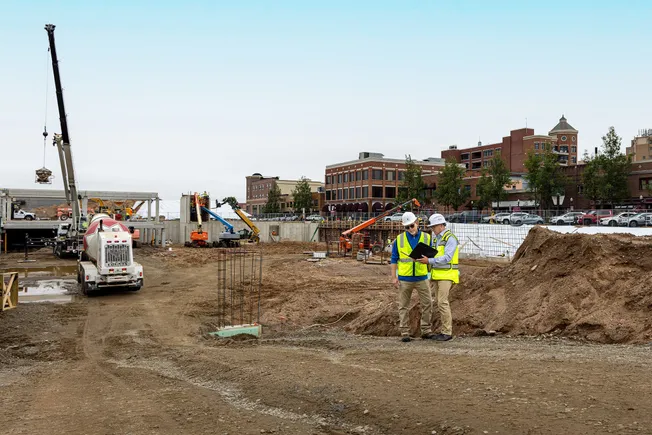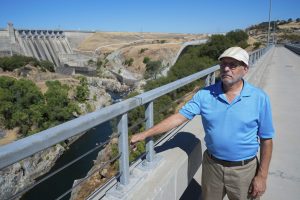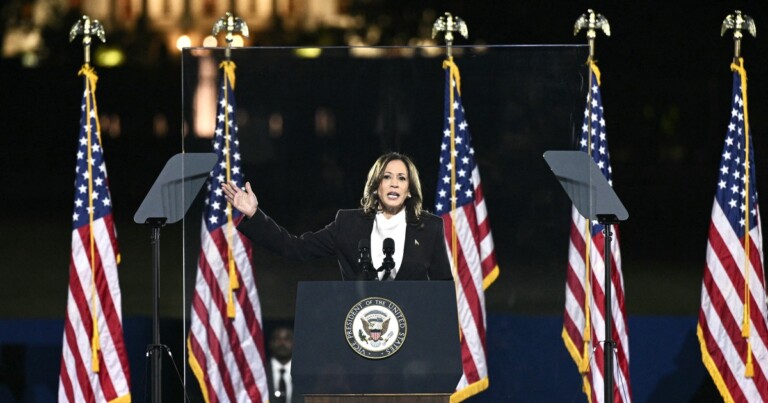Insurance pro urges a ‘proactive, positive approach’ to safety
This audio is auto-generated. Please let us know if you have feedback.
Randy Dombrowski says safety has been pretty much his whole life.
With more than 30 years focused on hazard mitigation and protection, it’s clear why. Today, Dombrowski is the director of safety services for Stevens Point, Wisconsin-based business insurance company Sentry Insurance’s West region.
Here, Dombrowski talks with Construction Dive on what major factors to pay attention to in communication around safety, how to prioritize sending workers home safely and the way the industry measures success.
The following has been edited for brevity and clarity.
CONSTRUCTION DIVE: Why can it be hard for a contractor to get follow-through on safety practices?
RANDY DOMBROWSKI: I think there are three key elements to why this happens.
The first one is understanding that the crews work together six or seven days a week. They build superior bonds — friendships — and the last thing that they want to be referred to as is “whistleblower.” So, they’re very cautious of what they do and how they approach safety because of their relationships.
Randy Dombrowski
Permission granted by Sentry Insurance
But they have to realize the only way they can take care of their buddy in a potentially dangerous situation is to call it out. They don’t have to run right to the superintendent, but what they need to do is to stop that dangerous exercise right there and make sure that they’re looking out for each other if something is overlooked.
Another one is the labor shortage. Workers know their skilled labor is highly sought within the industry. Your approach on how you work with them proactively with safety measures and how you address things amongst the team makes a difference. What they want is support, right?
I’ve experienced this firsthand over the last couple of years where company leaders are just drilling their crew members. Just a negative message. They’re focused on the things they were doing wrong. Within five minutes, the entire crew is glazed over. Nobody was listening anymore.
And that’s what we never want to do with safety. We always want to take a proactive, positive approach. I’ve seen the other side of that too, where the leaders start complimenting and recognizing what they’re doing well, and then maybe lead to a message of, “Here’s areas of improvement we need to focus on.” But you allow it to be interactive during those meetings.
Then there’s project timelines. The project timeline can really impact safety. I’ve seen it where a project manager shows up on the jobsite upset because they’re not going to make their timeline, and everything becomes a rush. So, when that happens, safety goes to the wayside. It’s sad to see, but that time management becomes a priority over safety.
So, how can a contractor walk that line between empowering everybody to speak up, taking the time to do things safely and ensuring a project is delivered on time?
I’d just say a setback with an accident or an injury on a jobsite is going to extend that project time even further down the road. Because now you have a whole other area that you need to focus on. That time management issue is still going to be there, but everyone’s center of focus is going to be around what happened and what occurred.
I think one of the major contributing factors is the amount of time that you have to invest in safety to do it right. So let’s say that task or that project is only gonna take me 15 minutes, but it’s going to take me hours to set up that trench box. What do you think they’re going to do?
It’s time management, it’s project time. They need to get to that next project in the afternoon. That’s where our center of focus needs to be. We need to be mindful of that time element. The project has a timeline. Everybody understands what we need to meet, but safety comes first. Because if we do it unsafely, like I said, that accident or injury is going to cost more time and more problems for them finishing on time than anything else will.
Are measurements around safety changing for the better?
I think that’s what rounds out a really good safety program if they have that element or that piece to it. They’re measuring what their trends are and what success they’re seeing out of it. I think sometimes when we look at the work being performed, was it done safely? What is that track record of that company and how well are they doing? And I think a well oiled machine is monitoring that. It’s not having a safety plan that’s collecting dust, it’s revisiting that safety plan and that other element of how safe are we, what is our incident rate? What is our track record?
When I’m out on a project site or I’m presenting at a safety meeting, that’s one of my conversations. Do you know what your company’s track record is? Do you know how safe you guys are? And that’s really based on your loss experience and claim experience, right? Well, what’s driving losses?
You can only be lucky so long before accidents and injuries start to surface. And they’re going to surface. Because luck runs out. And that’s where those superior safety programs and policies and reinforcement make a big difference. Those conversations should be happening. And if they’re not, we’re out there having those conversations with our customers to educate them because there’s no secret there that that’s what makes the reputation of the company. Workers know who the safe contractors are and who they need to be careful with.
What can smaller firms do to improve?
That small company that’s having those positive safety conversations at the end of the day is going to stand out. There’s many jobsites that I walked out on the project site and there wasn’t a superintendent, there wasn’t a jobsite foreman, but there was always someone there that stepped up into that leadership safety role. The person the workers knew who they could go to for safety if the business owner wasn’t there. And I think a good leader and a good company recognizes and needs to adapt when they need to, regardless of size.
Information contained on this page is provided by an independent third-party content provider. This website make no warranties or representations in connection therewith. If you are affiliated with this page and would like it removed please contact editor @producerpress.com





